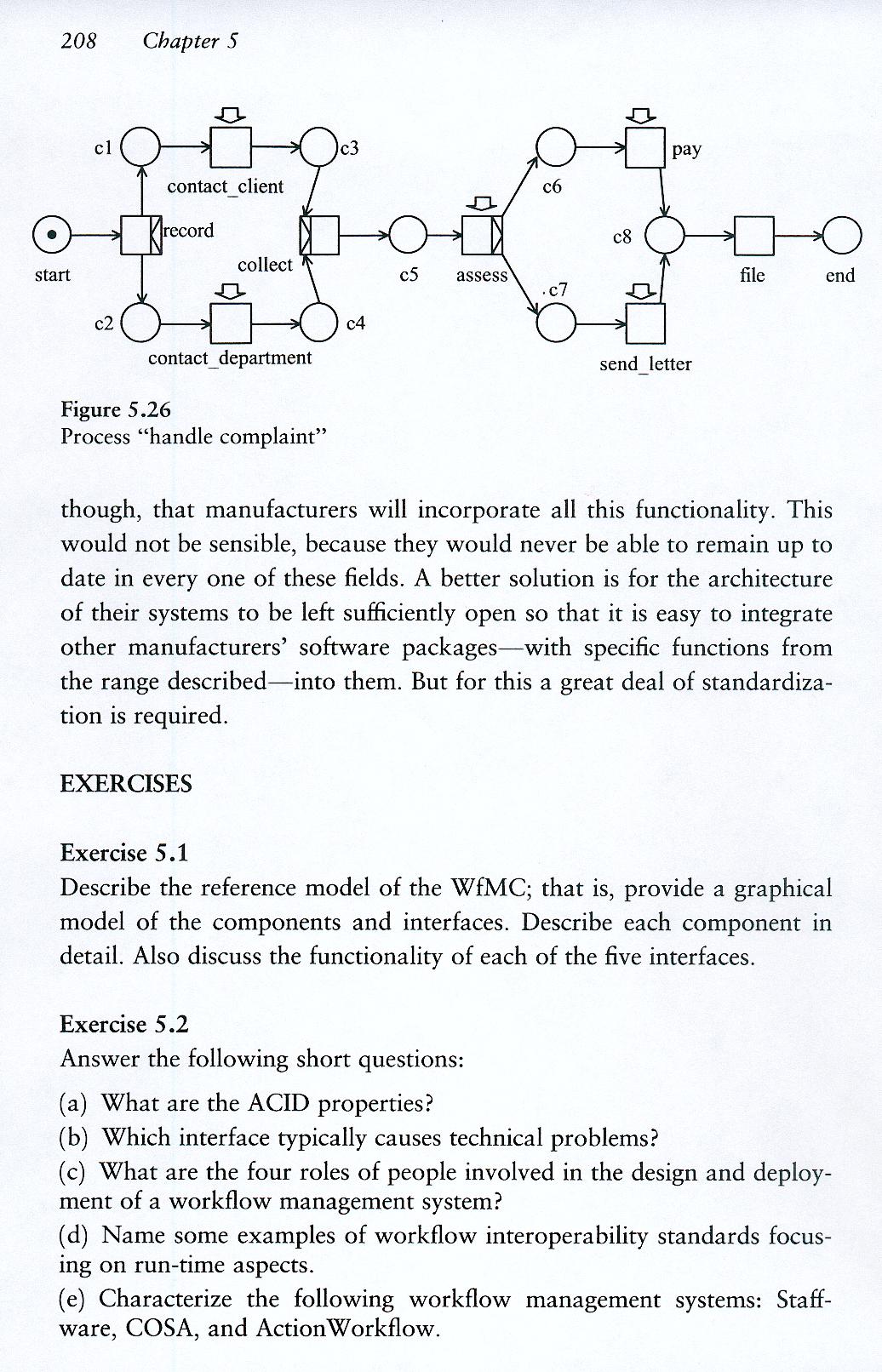48 (97)

208 Cbapter 5
|
G> |
“C A -> |
-O- >—> —^ contactclient 7 record |
—o : |
p / c6 |
O -> pay t c8 |
-o |
|
start |
collect |
\ c5 assess\ |
f file |
cnd | ||
|
-ci |
5c4 |
V |
pl | |||
|
contact department |
sendletter | |||||
Figurę 5.26
Process “handle complaint”
though, that manufacturers will incorporate all this functionality. This would not be sensible, because they would never be able to remain up to datę in every one of these fields. A better solution is for the architecture of their systems to be left sufficiently open so that it is easy to integrate other manufacturers’ software packages—with specific functions from the rangę described—into them. But for this a great deal of standardiza-tion is reąuired.
EXERCISES
Exercise 5.1
Describe the reference model of the WfMC; that is, provide a graphical model of the components and interfaces. Describe each component in detail. Also discuss the functionality of each of the five interfaces.
Exercise 5.2
Answer the following short ąuestions:
(a) What are the ACID properties?
(b) Which interface typically causes technical problems?
(c) What are the four roles of people involved in the design and deploy-ment of a workflow management system?
(d) Name some examples of workflow interoperability standards focus-ing on run-time aspects.
(e) Characterize the following workflow management systems: Staff-ware, COSA, and ActionWorkflow.
Wyszukiwarka
Podobne podstrony:
geom1 (jPS ~ GlobaJ posiJt Ort tsrew P) i Q > łzi&l, Sc Q went Icostoian O®
45 (97) 208 Część druga - Społeczne, indywidualne i kulturowe wartoici zabawy... w doktora w nadziei
dla Uli ¥ 1 % Oo <3 C~ Sc £> cOX O V ~o >
image 48 (3) SKRĘCONE, SWOBODNE NITKI ▲ 7-5-5-7 sc. (łezka) ^ 7=5-5-7 sc. (łezka) 7=5-5-7 sc. (łezka
48 3 AFGHAN BODY Ch 208 loosely. Row 1: Sc in second ch from hook and in each ch across: 207 sc. Row
skanuj0009 (97) 5 , o i r“ l C-t H -Di /w* W>r _ /Vlc /Y]t /vn <2<Sc C^
Image (48) QDVĆ‘<Qtac • X<o~2, *4 = 0z** 1 kx^0/3rK 2;2 - ^ 2“ +- k -O / -
17 28 29 30 31 47 48 56 57 58 59 70 71 79 80 96 97 98 1.9abc, 1.10całe,l.l
Scannen0068 7^77^7 h JŁ* i]- I l5>fźtf<T)fi£f
więcej podobnych podstron